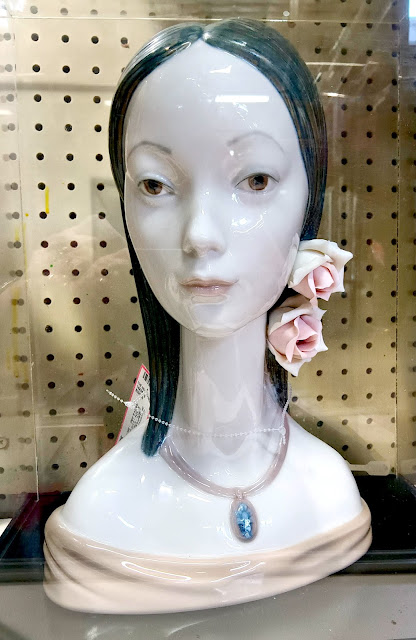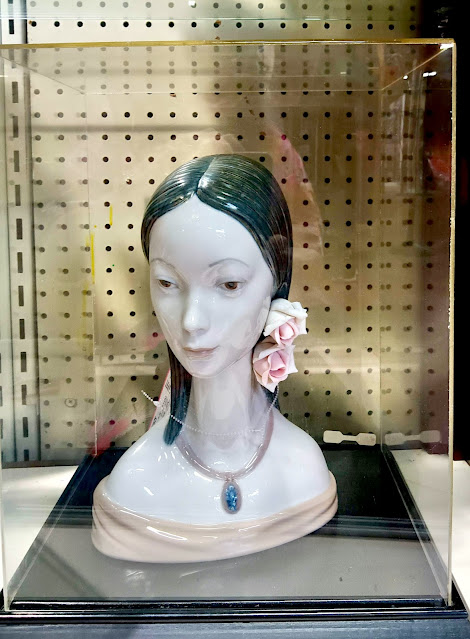Right from the night I first saw you
My heart has been yearning for you
What else could any heart do?
Lady of Spain, 1931
And who could not yearn for this lovely lady by the Spanish porcelain firm of Lladró. Entitled "La Maja," this beautiful bust was sculpted by Juan Huerta and introduced in 1970. Lladró retired this piece in 1985. Although "maja" now generally means a pleasant and attractive woman, in the time of the Spanish painter Francisco José de Goya y Lucientes (1746 –1828), the word referred to a pretty and vivacious young woman of the lower classes who dressed in a vibrant and bold manner. Goya featured majas in a number of his paintings, the most famous of which are his La Maja Desnuda and La Maja Vestida.
Her raven tresses are adorned with two realistic roses. These roses were formed petal by petal, hand-molded out of clay and carefully applied to the figurine before the piece was fired. This delicate detail and workmanship are typical of the finest of Lladró's creations. Lladró was founded in 1953 by three brothers, Juán, José, and Vicente Lladró. Educated at the Valencia School of Arts and Crafts, where they studied sculpture and painting, the brothers first began producing ceramic flowers and decorative items for sale in the local market, but by 1956 they began creating the sculptural figurines for which Lladró is world famous. After expanding their workshop several times to meet growing demand, in 1958, the brothers relocated to a factory in Tavernes Blanques, where Lladró still resides today.
This delicate damsel comes in her own display case.
All posted items are for sale at Next-to-New, but things can sell quickly!
16455-16






